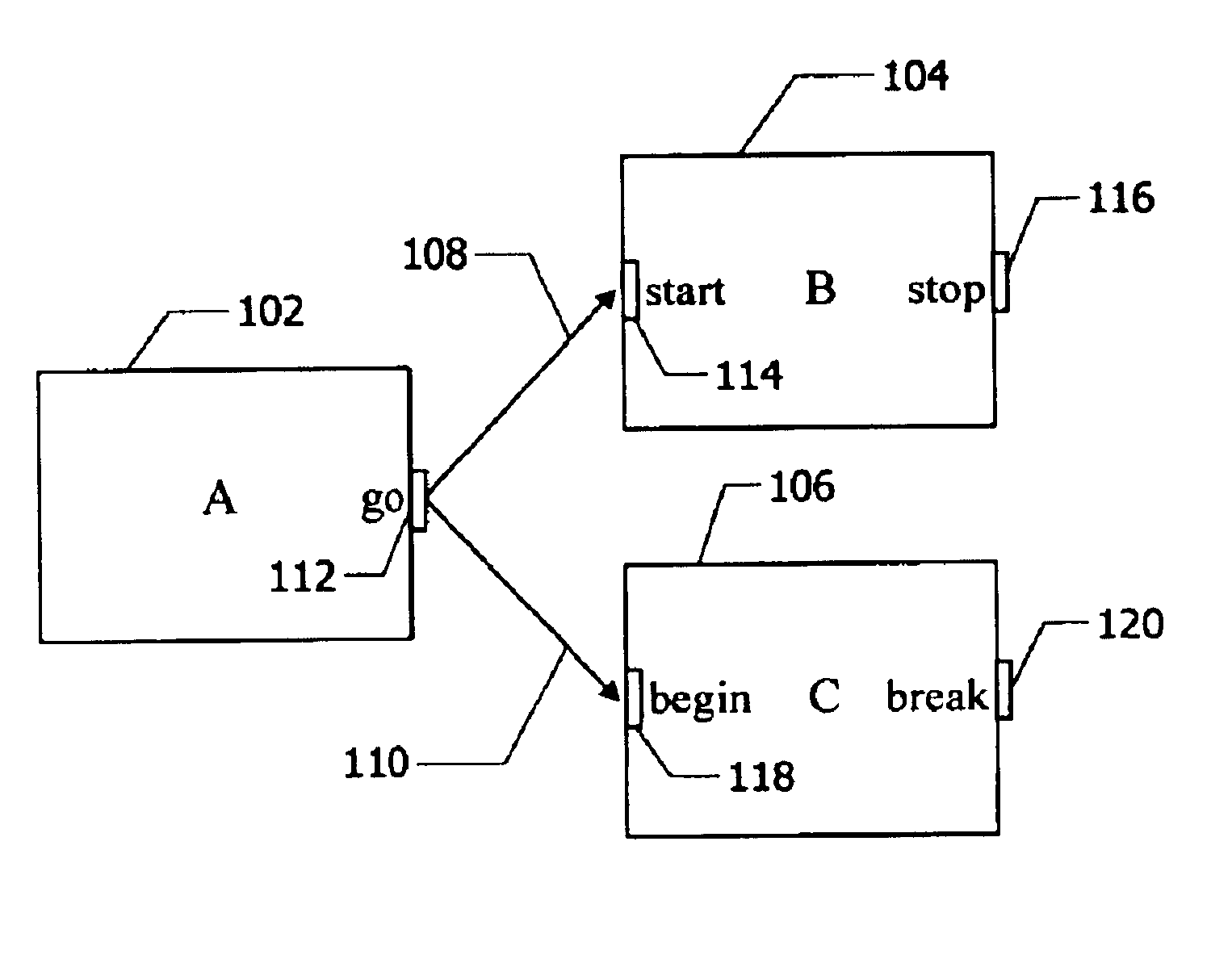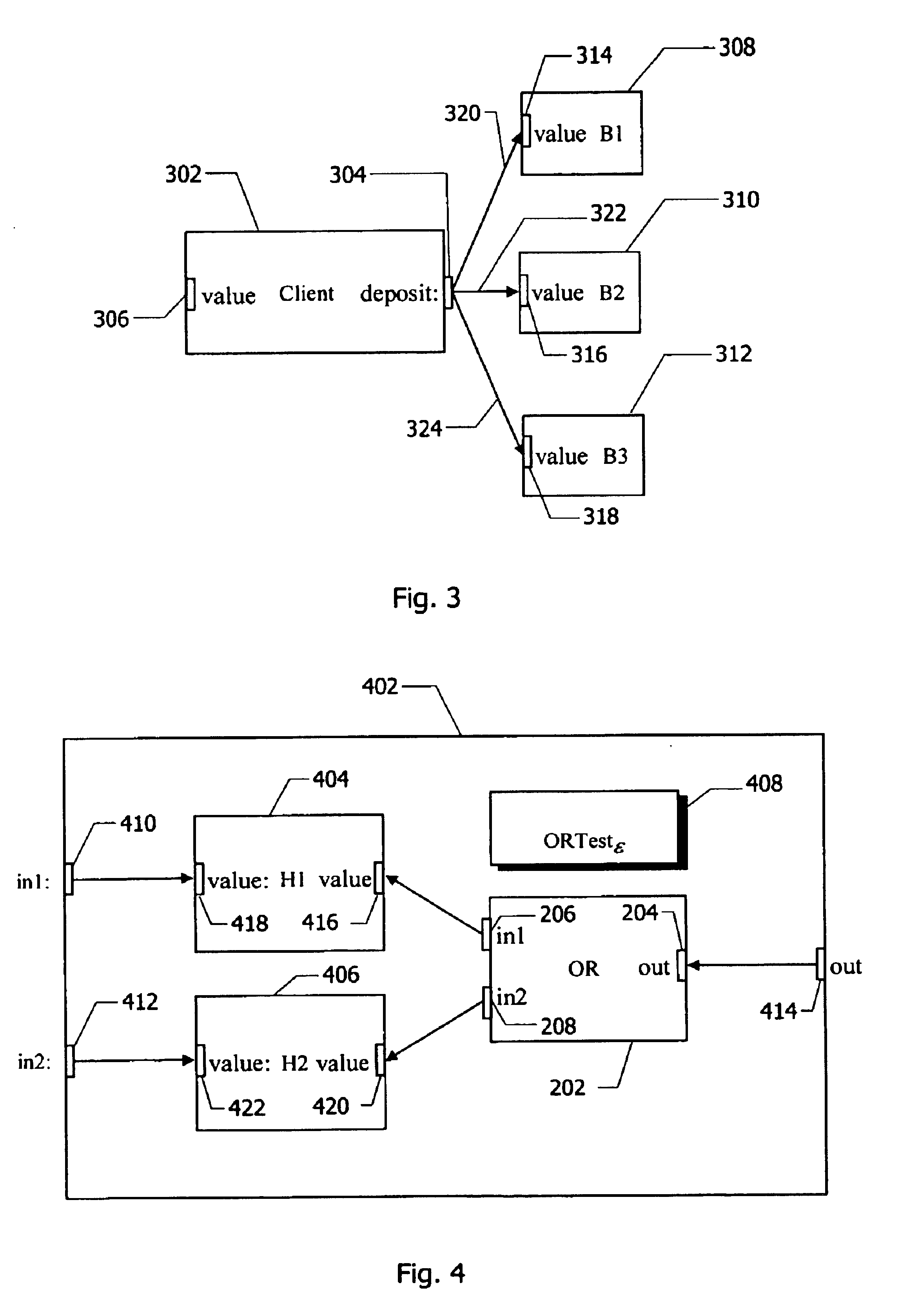System and method for programming using independent and reusable software units
a software unit and software technology, applied in the field of software code reuse, can solve the problems of object technology not providing a transparent mechanism for communication among objects, no accepted methodology for creating software repositories,
- Summary
- Abstract
- Description
- Claims
- Application Information
AI Technical Summary
Benefits of technology
Problems solved by technology
Method used
Image
Examples
example
We describe a connecton that sends and accepts values in Km that need to be linked with connectons that work in Meters and Miles. The structure of the connecton is given by the method
connectonStructure
|t|t := super connectonStructure.“The parent returns the empty structure”t add: #Km model: VelocityKm.“Km connecton”t add: #M model: VelocityM.“Meters connecton”t add: #Mi model: VelocityMi.“Miles connecton”t link: #Km gate: #out to: #M gate: #in: filter:[:x| x*1000] filter: [:x| x / 1000].t link: #Km gate:#out to: #Mi gate:#in: filter:[:x| x / 1.65] filter: [x| x*1.65].
Links are established by the method link:gatet:to:gate:filter:filter:, where he first filter is the direct filter and the second is the reverse filter. The direct filters convert Km into meters and miles and the reverse filters makes the reverse conversions. Filters permit to join gates with different interfaces without additional elements. Channel filters can be combined with gate output functions. For example the output f...
PUM
 Login to View More
Login to View More Abstract
Description
Claims
Application Information
 Login to View More
Login to View More - R&D
- Intellectual Property
- Life Sciences
- Materials
- Tech Scout
- Unparalleled Data Quality
- Higher Quality Content
- 60% Fewer Hallucinations
Browse by: Latest US Patents, China's latest patents, Technical Efficacy Thesaurus, Application Domain, Technology Topic, Popular Technical Reports.
© 2025 PatSnap. All rights reserved.Legal|Privacy policy|Modern Slavery Act Transparency Statement|Sitemap|About US| Contact US: help@patsnap.com



